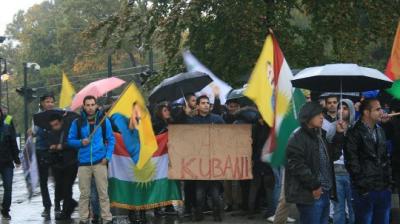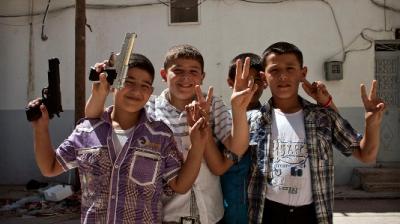About fear, terrorism and what is really new
Traditionally, one of the most powerful tools of terrorist organisations is the instrument of fear. Terrorism frightens us. It is meant to do that. The impact of a terrorist attack transcends beyond its immediate action in terms of time, geographic space and direct victims. The 9/11 terrorist attacks in New York and Washington sent shockwaves across the globe that lasted months, if not years. Something happens here and now, but we will be afraid of it happening again long after. That is how terrorist acts change the way we live and look at the world. It deliberately seeks to do that.
Terrorisms' message
In more general terms, terrorist acts are a form of communication. Terrorist acts send a political message. Perpetrators may resort to violence because they feel ignored, not listened to. It can in that sense be considered a loud message of those who feel politically excluded. Terrorism can be instrumental in communicating a specific political agenda. It can put a forgotten or excluded political position or group on the agenda. It can advocate that position and be considered an act of frustration and an instrument of the powerless that oppose the monopoly of the state to use violence. It can even be considered the ultimate instrument of those who feel excluded or suppressed to be heard.
All these elements are found in “old school” terrorism carried out by the separatists movements of the nineties in the last century. It holds for those who fought colonial powers in the last half of the 20th century. It was found in the case of the Moluccans in the seventies in the Netherlands, the ANC in South Africa, the IRA, the case of the ETA, and even the RAF in Germany.
The strategic message of IS
The question is, does the Islamic State (IS) represent a new form of terrorism, one that deviates from the old school elements? What, in the light of the above can we make of IS? Is what they do really new? And how does IS exploit fear as a change agent and what is the message?
IS’s leadership has a well-developed communication strategy. It makes calculated choices. It is frightening the West, purposely and in a targeted way. It is approaching and addressing the local population in (parts of) Iraq and Syria with an underlying idea and plan. It is exploiting media in a calculated and advanced way. It controls the external communication of its support base through a well-controlled and strategic messaging. It has a targeted recruitment strategy. It is seeking to change the way we live and look at the world.
The message they have for the world seems to be “we are relevant”, "you will have to deal with us”. This message is meant not just for the Western world, but even more importantly for the audience in states with a Muslim majority. IS pictures itself as the representatives of that same Muslim world with a distinct political agenda and, in that sense, the organisation presents itself as progressive, “ahead of the curve”. Its methods are such that it cannot but frighten, and leave a strong impression onto the world. It has purposely managed to be the talk of the town. And it has a message for those who would under normal conditions carry out a reality check on their claims and acts: journalists and aid workers. The message to them is “stay away, this is our territory and space”.
And last but not least there is a very strong message for the potential supporters: “if you agree with us you are welcome. If you have nowhere to go, if you have no perspective in life, if you want to be a somebody, come and join us. We at IS offer comradeship and a reason to live and die for”. IS seems to claim not only strength and commitment to a cause but also a readiness to die for it, which gives a sense of invincibility.
Arab Spring
IS has learned the lessons from the Arab Spring and the strength of the use of social media. It is convinced of its support base in many western diaspora communities as well as in states with a Muslim majority, and it is also convinced of the potential of a military victory, based on the Afghanistan scenario. As such, it presents and regards itself as the winner. Frightening the West and provoking a military response from the US and UK, is based in, and the result of, this conviction. IS has the money, the support base, the enemy, a vision and the ideology to support the vision. It challenges the monopoly of the use of force and claims to represent the powerless.
Social media
IS exploits fear and sends messages, but the sophistication of the exploitation of fear by IS, as a political instrument, is unprecedented. Its professional use of the internet is unheard of. IS is more adept at using the possibilities of the new era of modern professional communication and media outreach, than any other terrorists organisation has ever been before. There seems no escape. Not the elements of fear and messaging, but the way it is exploited to the fullest, is confrontationally new.
Click here to read the op-ed on the ICCT website.




